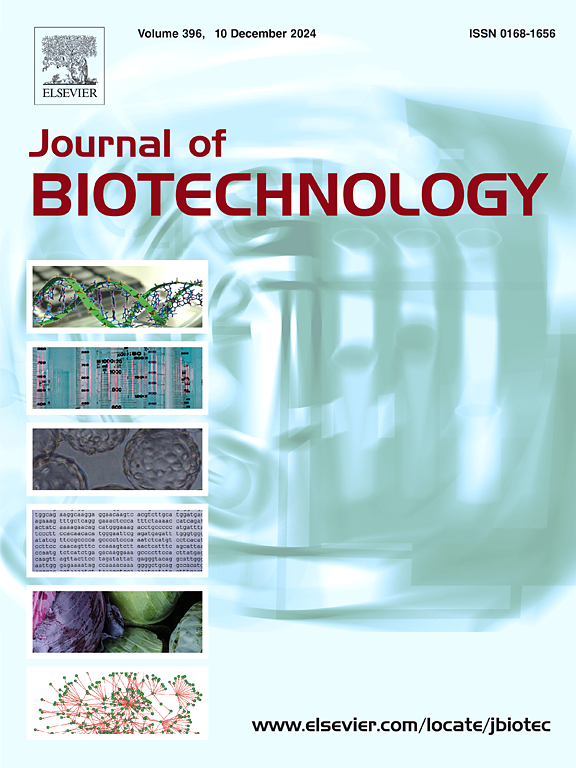3D cell spheroid inoculated with bacteria: An in vitro model for assessing antimicrobial efficacy
IF 3.9
2区 生物学
Q2 BIOTECHNOLOGY & APPLIED MICROBIOLOGY
引用次数: 0
Abstract
Bacterial infections persist as a significant global health challenge, intensifying the demand for novel antimicrobial agents capable of overcoming persistent infections and mitigating the spread of drug-resistant strains. Traditional 2D cell culture assays, prone to bacterial contamination, fail to recapitulate the complex 3D architecture of in vivo tissues, rendering them inadequate as in vitro models for evaluating antimicrobial efficacy. This study investigates the effectiveness of 3D spheroids inoculated with bacteria, hypothesizing that 3D spheroids allow for assessment of antibacterial agents. Human prostate cancer cells (DU145) were cultured into 7-day-old spheroids. The morphology and migration ability of the 3D spheroids before and after inoculation with the model bacterium E. coli were analyzed. Through fluorescence microscopy and single-cell multimode analysis, it was found that E. coli can penetrate into the central region of the 3D spheroid while maintaining its viability. The complex multicellular structure of the 3D spheroids is retained under bacterial growth pressure, and the migration function of the 3D spheroids is preserved. The antimicrobial efficacy of the commercial antibiotic gentamicin and the functional material ZIF-8@Ag was evaluated by counting viable E. coli within the 3D spheroids. The results showed that both gentamicin and ZIF-8@Ag can penetrate the 3D spheroids, eradicating the embedded E. coli while preserving the spheroid’s structure. These findings highlight the importance of 3D spheroid-bacteria co-culture models as valuable tools for evaluating the permeability and efficacy of antimicrobial agents.
接种细菌的三维细胞球体:一种评估抗菌效果的体外模型
细菌感染仍然是一项重大的全球健康挑战,这加大了对能够克服持续感染和减轻耐药菌株传播的新型抗菌剂的需求。传统的2D细胞培养分析容易受到细菌污染,无法概括体内组织的复杂3D结构,因此不足以作为体外模型来评估抗菌效果。本研究调查了接种细菌的三维球体的有效性,假设三维球体允许评估抗菌剂。将人前列腺癌细胞DU145培养成7天大的球状体。对模型大肠杆菌接种前后三维球体的形态和迁移能力进行了分析。通过荧光显微镜和单细胞多模分析发现,大肠杆菌可以渗透到三维球体的中心区域,同时保持其活力。在细菌生长压力下保留了三维球体复杂的多细胞结构,并保留了三维球体的迁移功能。商业抗生素庆大霉素和功能材料ZIF-8@Ag的抗菌效果通过计算三维球体内活菌的数量来评估。结果表明,庆大霉素和ZIF-8@Ag都能穿透三维球体,在保留球体结构的同时清除嵌入的大肠杆菌。这些发现强调了三维球体-细菌共培养模型作为评估抗菌药物渗透性和功效的有价值工具的重要性。
本文章由计算机程序翻译,如有差异,请以英文原文为准。
求助全文
约1分钟内获得全文
求助全文
来源期刊

Journal of biotechnology
工程技术-生物工程与应用微生物
CiteScore
8.90
自引率
2.40%
发文量
190
审稿时长
45 days
期刊介绍:
The Journal of Biotechnology has an open access mirror journal, the Journal of Biotechnology: X, sharing the same aims and scope, editorial team, submission system and rigorous peer review.
The Journal provides a medium for the rapid publication of both full-length articles and short communications on novel and innovative aspects of biotechnology. The Journal will accept papers ranging from genetic or molecular biological positions to those covering biochemical, chemical or bioprocess engineering aspects as well as computer application of new software concepts, provided that in each case the material is directly relevant to biotechnological systems. Papers presenting information of a multidisciplinary nature that would not be suitable for publication in a journal devoted to a single discipline, are particularly welcome.
 求助内容:
求助内容: 应助结果提醒方式:
应助结果提醒方式:


